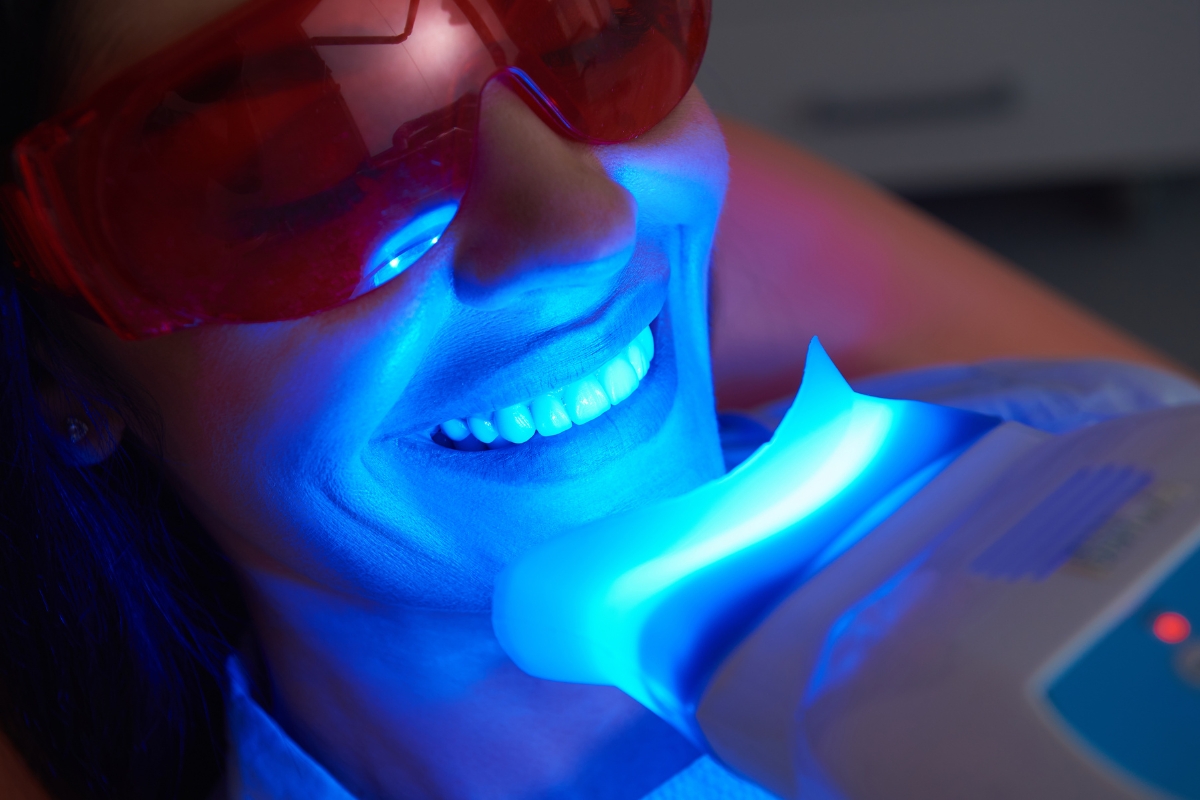Why Teeth Whitening Causes Tooth Sensitivity for Some Patients

Teeth can brighten fast, yet some people feel a sharp twinge during or after treatment. If that sounds familiar, you’re not alone and you’re not doing anything “wrong.” This guide explains why teeth whitening sensitivity happens, what raises your risk, and how to keep your smile bright without the zingers.
What’s happening inside a tooth
Whitening gels use hydrogen peroxide or carbamide peroxide to lift stains. These small molecules can pass through enamel into dentin and the pulp, briefly irritating tooth nerves. When dentin tubules are open, fluids move more easily—this “hydrodynamic” fluid shift is a key reason you may feel short, sudden pain to cold, air, or sudden pressure. The good news: for most patients, this discomfort is temporary.
How common is post-whitening sensitivity?
Research shows sensitivity is a mild side effect. In one study of at-home whitening, about half of users reported mild sensitivity, ~10% had moderate sensitivity, and ~4% had severe sensitivity lasting one to two weeks.
Why do some patients feel more than others?
- Higher concentration or longer contact time increases the odds. Lower-concentration gels used professionally can achieve noticeable shade change with a lower risk of tooth sensitivity.
- Gum recession or enamel microcracks expose dentin tubules, making “zingers” more likely.
- Recent whitening or aggressive brushing can keep tubules open and reactive.
If you’re exploring teeth whitening in Cheney, opt for a personalized treatment plan that balances shade change with comfort—especially if you already notice tooth sensitivity from teeth whitening at home.
Ways to lower sensitivity—before, during, and after whitening
Before you whiten
- Use a potassium-nitrate + fluoride toothpaste for 1–2 weeks. Clinical trials show it can reduce bleaching-related sensitivity and improve the overall experience.
- Patch-test your tolerance level with shorter sessions or a lower-strength gel recommended by your dentist. A gradual start often helps.
During treatment
- Choose the right concentration and follow the precise wear times of the trays. Evidence suggests that often lower concentrations can deliver a color change with reduced sensitivity concerns.
- Keep gel off the gums. Custom trays and careful application limit irritation.
After each session
- Pause if pain spikes. Take a rest day, then resume with a shorter wear period.
- Avoid very hot or ice-cold drinks and foods for the next 24–48 hours while the enamel is temporarily more permeable.
- Ask about in-office desensitizers like 5% potassium nitrate or fluoride varnish applied around treatment sessions.
When to call the office
Persistent pain, throbbing, or sensitivity that lingers beyond two weeks deserves a professional look. Crowns, large fillings, or cracks can change how whitening reacts, and a quick exam helps tailor oral care.
You can whiten comfortably with the right treatment plan. The right gel selection and protective steps before and after treatment reduce teeth whitening sensitivity while still moving toward your desired shade.
Book a whitening session with Dr. McDonald—we’ll check your risk factors, pick a plan that focuses on sensitivity issues, and map out safe touch-ups that keep your results long-lasting.




